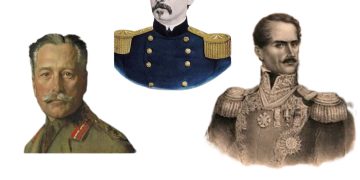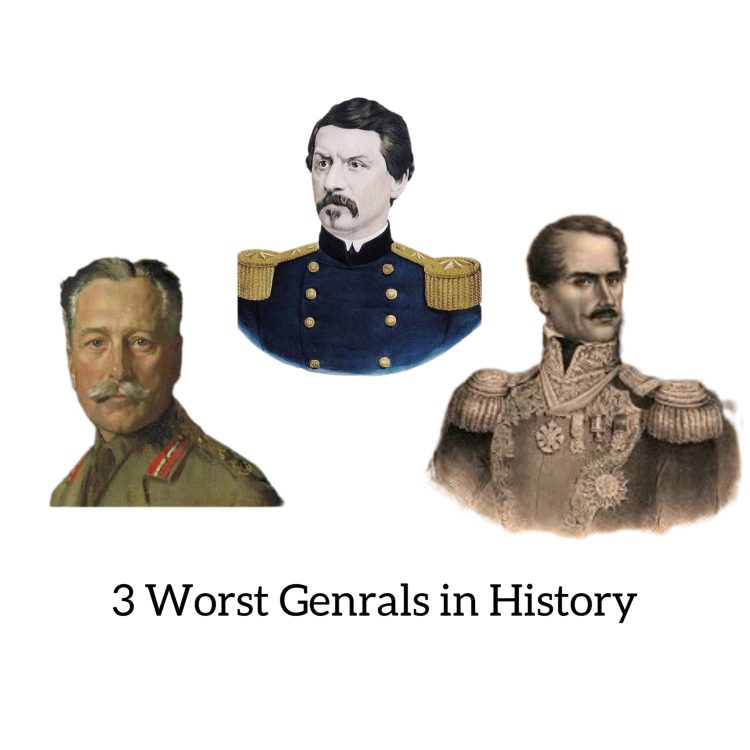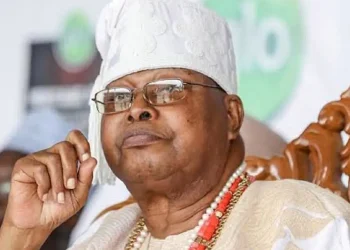History is replete with tales of remarkable leaders who have shaped the destiny of nations through their strategic brilliance and unwavering resolve.
However, amidst the annals of triumph and valor, there also lies the somber chapter of those whose ineptitude and poor decision-making led to devastating consequences. War is a cruel and chaotic affair, and even the best generals can make mistakes. But some generals are simply worse than others. In this well-written article, we will be discussing three of the worst generals in history.
In this intriguing exploration, we delve into the lives of three infamous military commanders – Douglas Haig, George McClellan, and Antonio López de Santa Anna.
Douglas Haig
World War I provided a platform for a multitude of exceptionally inept commanders to showcase their leadership shortcomings. Among them was Luigi Cadorna of Italy, whose incompetence was glaringly evident through his futile engagements in a dozen battles on the Isonzo, culminating in the complete collapse of his army at Caporetto.
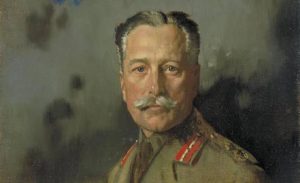
In Austria, Franz Conrad von Hötzendorf grappled with an inability to make a decisive choice regarding invading a specific country. Eventually, due to his wavering leadership, the German General Staff had to intervene and assume control of his armies.
While the Western Front offered a grander theater for military blunders, it was British commander Douglas Haig who embraced this opportunity with remarkable enthusiasm. Haig’s miscalculations were epitomized by his underestimation of the machine gun’s impact on the battlefield. Dismissing the notion that the previous failures of the Allies were due to an impervious curtain of rapidly flying bullets, Haig rashly ordered his troops to charge into the abyss during the First Battle of the Somme on July 1, 1916. Shockingly, nearly 20,000 soldiers paid the immediate price of this audacious command, contributing to the staggering tally of 60,000 British casualties on the very first day of the ill-fated attack.
Having amassed roughly twice as many losses in a single day as Arthur Wellesley, 1st duke of Wellington, had suffered during the entire Peninsular War, Haig saw no reason to change tactics. He continued to view attrition as the most effective strategy for defeating Germany; the British lost some 420,000 men at the Somme.
The next major British offensive came at Passchendaele (July 31–November 6, 1917), where Haig lost another 275,000 troops in a battle whose name became synonymous with pointless slaughter. After the war, the phrase “lions led by donkeys” came to be associated with the British army for what should be obvious reasons.
George McClellan
George McClellan is one of those generals who really looks great on paper. He graduated second in his class at West Point (well ahead of classmates Stonewall Jackson, George H. Gordon, and George Pickett). His work as an observer during the Crimean War gave him insight into the importance of logistics for an industrialized army, and years spent as the chief of engineering for the Illinois Central Railroad made him aware of the transformative nature of rail transport.
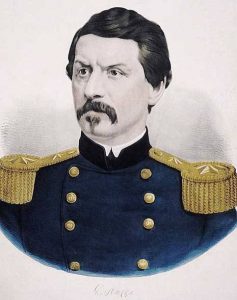
“Little Mac” would prove himself to be a superb organizer who kept his army well supplied, efficiently run, and happy. He was also supremely gifted at overestimating the size of his opponents’ armies to a degree that beggared belief. Because he never wanted to face a superior force, he refused to fight.
This is, obviously, a problematic quality when one’s title is general-in-chief of the entire Union army. After months of inactivity, McClellan was finally spurred to action by Pres. Abraham Lincoln. The resulting Peninsular Campaign (April–July 1862) was a marvel of planning but something of a farce in execution.
Eschewing a direct overland march to the Confederate capital of Richmond, McClellan orchestrated an impressive amphibious landing of more than 100,000 troops at Fort Monroe, at the southeast end of the peninsula between the James and York rivers. In stereotypically McClellan fashion, he was promptly checked by a vastly inferior force under John Bankhead Magruder. Although he outnumbered Magruder’s Army of the Peninsula 10-to-1, McClellan settled in for a monthlong siege.
By the end of May 1862, Confederate commanding Gen. Joseph E. Johnston had withdrawn his forces to Richmond, and McClellan was close enough to the Confederate capital to hear its church bells ringing. Johnston was wounded on the first day of the Battle of Seven Pines, six miles east of Richmond, and he was replaced by Robert E. Lee.
Lee demonstrated an immediate grasp of McClellan’s demeanor, and, during the Seven Days’ Battles (June 25–July 1, 1862), Lee drove back the Union armies from Richmond’s doorstep. Lincoln relieved McClellan but reinstated him after the devastating Union defeat at the Second Battle of Bull Run. Once again, McClellan worked his organizational magic, restoring the morale of a shattered Union army.
And once again, at the Battle of Antietam, McClellan’s terminal case of “the slows” (as Lincoln called it) prevented the exploitation of a possible war-ending vulnerability in Confederate defenses.
He ran as a Democrat against Lincoln in the 1864 presidential election. A key plank in the Democratic platform that year was, appropriately, “not fighting,” and McClellan lost in a rout.
Antonio López de Santa Anna
Mexican General, Antonio López de Santa Anna probably wished that everyone really did remember the Alamo, because:
- He actually did win that battle (he outnumbered his opponents between 10- and 30-to-1); and
- During the 13-day siege, he somehow resisted the urge to betray all his allegiances and change sides.
Loyalty to himself and himself alone would be something of a running theme in the narrative of Santa Anna’s life, and his rise to power in Mexico was characterized by near-constant vacillation and betrayal of his allies. After his defeat by the Texans at the Battle of San Jacinto, Santa Anna was captured.
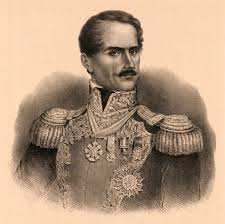
He effectively pledged to become an agent for the U.S. but found that he had been deposed upon his return to Mexico. His prestige restored by his conduct during the Pastry War with France, Santa Anna once again claimed dictatorial powers. Driven into exile in 1845, he contacted U.S. Pres. James K. Polk upon the outbreak of war between Mexico and the U.S. and offered to become an agent for the U.S. (again).
A U.S. ship conveyed him to Mexico, and upon his arrival—to the surprise of virtually no one—he executed a volte-face and took charge of the Mexican troops. Routed by U.S. forces under Winfield Scott, Santa Anna was again driven into exile.
When the French deposed Benito Juárez and installed Maximilian as emperor of Mexico, Santa Anna, now 70, reached out to the U.S. for support in deposing the emperor.
Simultaneously, he contacted Maximilian to offer the young emperor his services. Having several decades of duplicity to draw on at this point, everyone had a pretty good idea of how any such deal would turn out, and the aging general was rebuffed by both parties.
In addition to the three generals mentioned above, here are some other contenders for the title of Worst General in History:
- Gideon Pillow (Confederate Army)
- Franz Conrad von Hötzendorf (Austro-Hungarian Army)
- John Chivington (Union Army)
- Marcus Licinius Crassus (Roman Republic)
- Quintus Servilius Caepio (Roman Republic)
- Lloyd Fredendall (United States Army)
Ultimately, there is no one definitive answer to the question of who is the worst general in history. But the generals listed above are all good examples of military leaders who made serious mistakes that cost their armies dearly. Their stories serve as a cautionary tale for all aspiring generals.
